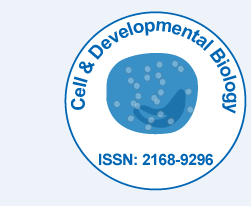
Cell & Developmental Biology
Open Access
ISSN: 2168-9296

ISSN: 2168-9296
Perspective - (2024)Volume 13, Issue 6
The demand for clean and sustainable energy sources has been increasing rapidly in recent years due to concerns about climate change and environmental degradation. Many researchers and scientists are working on developing new technologies to meet this demand. One promising technology that has gained attention in recent years is the Dynamic Equilibrium Cell (DEC).
The dynamic equilibrium cell is a device that converts the energy of the sun into electricity through a process called photoelectrochemical water splitting. The cell consists of two electrodes, an anode, and a cathode, which are immersed in a solution of water and a photosensitive material called a photoanode. When the photoanode is exposed to sunlight, it absorbs the energy and generates an electric potential across the cell.
The generated electric potential causes a flow of electrons from the anode to the cathode, which results in the splitting of water molecules into hydrogen and oxygen. The hydrogen gas produced can be used as a clean and sustainable fuel, while the oxygen gas can be released into the atmosphere.
The DEC technology has several advantages over other renewable energy sources. One of the main advantages is that it is a clean and sustainable source of energy. Unlike fossil fuels, which release harmful greenhouse gases into the atmosphere, DEC technology produces no emissions and does not contribute to climate change. It also does not require any non-renewable resources, such as coal or oil, to generate electricity. Another advantage of DEC technology is its efficiency. The cell can convert up to 20% of the energy from the sun into electricity, which is comparable to other solar cell technologies. The efficiency of the DEC can be further improved by using advanced materials for the photoanode and optimizing the cell design. DEC technology also has the potential to be costeffective. While the initial cost of setting up a DEC system may be higher than other renewable energy sources, such as wind or hydroelectric power, the long-term operating costs are lower. Once the system is set up, it requires little maintenance and has a long lifespan. Additionally, the hydrogen produced can be used as a fuel, which can offset the initial investment cost.
Despite these advantages, there are still some challenges that need to be addressed before DEC technology can become a widespread source of renewable energy. One of the main challenges is the stability of the photoanode material. The photoanode is a critical component of the cell, as it absorbs the energy from the sun and generates the electric potential. However, many of the current photoanode materials are unstable and degrade over time, which reduces the efficiency of the cell. Researchers are working on developing new and more stable photoanode materials to address this issue. Another challenge are the scalability of the technology. While DEC technology has shown promising results in the laboratory, it is still in the early stages of development. Scaling up the technology to produce large amounts of hydrogen gas for commercial use is a significant challenge that needs to be addressed. This will require advances in the materials used, as well as improvements in the design and manufacturing processes.
The dynamic equilibrium cell is a promising technology for sustainable energy. It has the potential to provide a clean and sustainable source of electricity while also producing a valuable fuel in the form of hydrogen gas. While there are still challenges that need to be addressed, the potential benefits of DEC technology make it an attractive option for meeting the growing demand for renewable energy sources. With continued research and development, DEC technology could play a significant role in creating a more sustainable future for our planet.
Citation: Almoli R (2024). Dynamic Equilibrium Cell: A Promising Technology for Sustainable Energy. Cell Dev Biol. 13:378.
Received: 01-Oct-2024, Manuscript No. CDB-24-22943; Editor assigned: 04-Oct-2024, Pre QC No. CDB-24-22943 (PQ); Reviewed: 18-Oct-2024, QC No. CDB-24-22943; Revised: 25-Oct-2024, Manuscript No. CDB-24-22943 (R); Published: 01-Nov-2024 , DOI: 10.35248/2168-9296.24.13.378
Copyright: © 2024 Almoli R. This is an open-access article distributed under the terms of the Creative Commons Attribution License, which permits unrestricted use, distribution, and reproduction in any medium, provided the original author and source are credited.